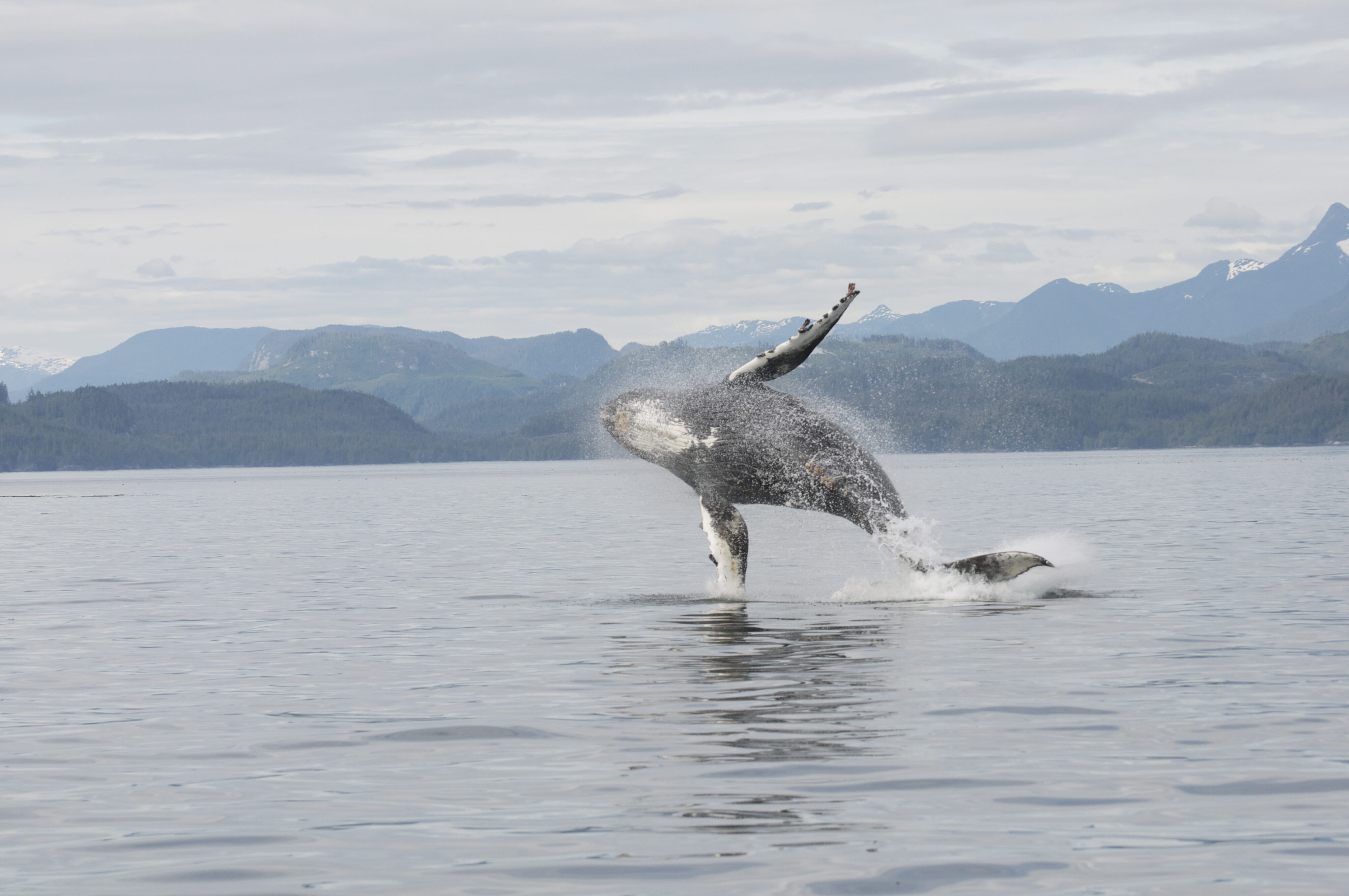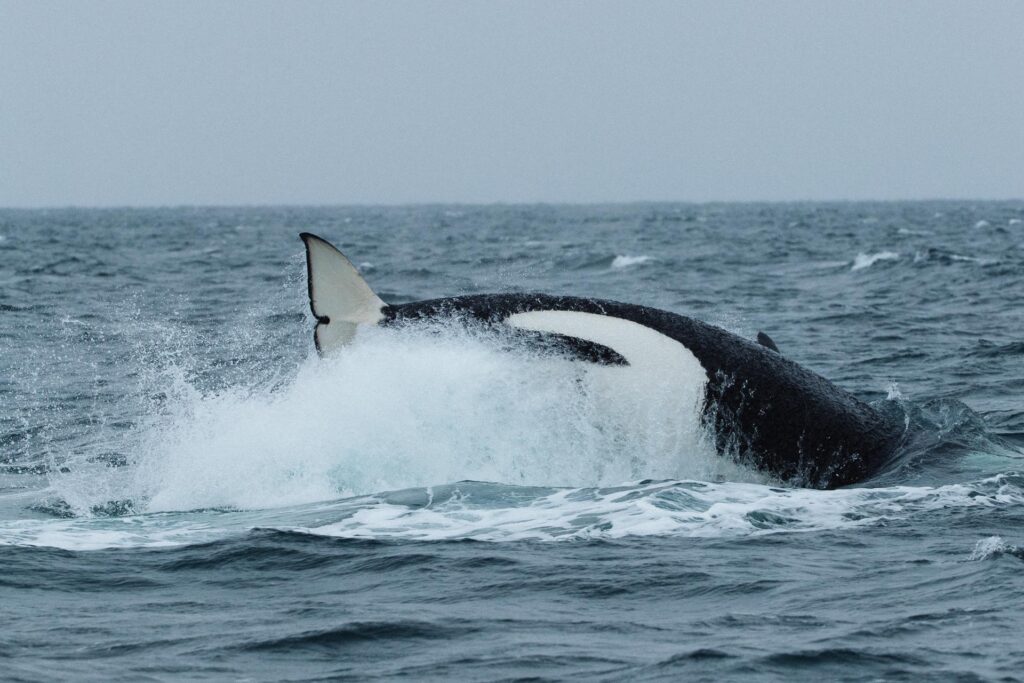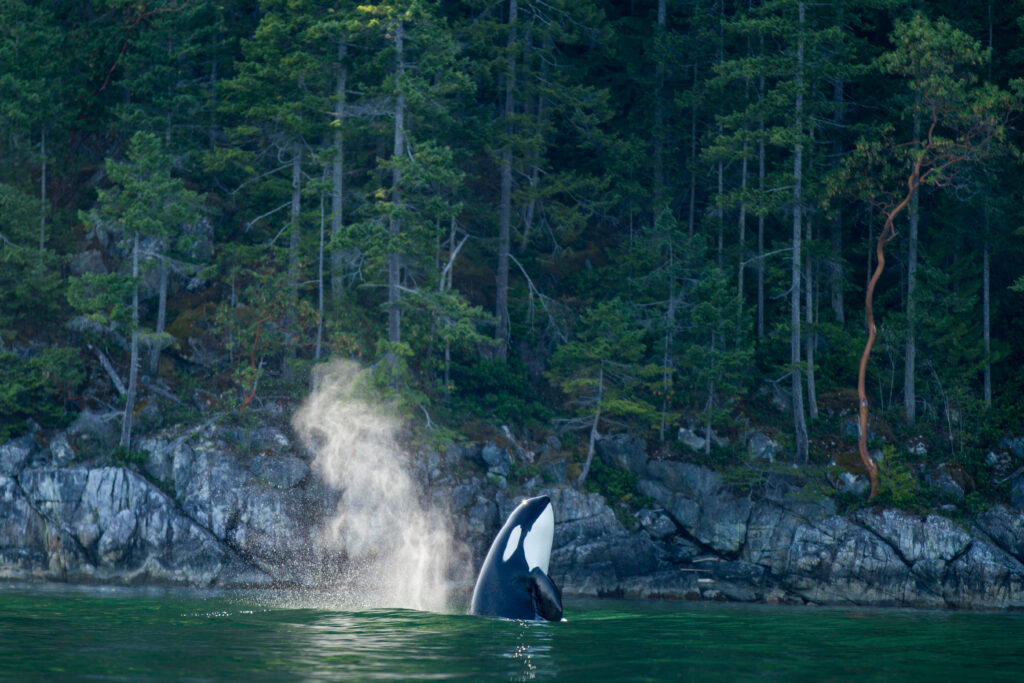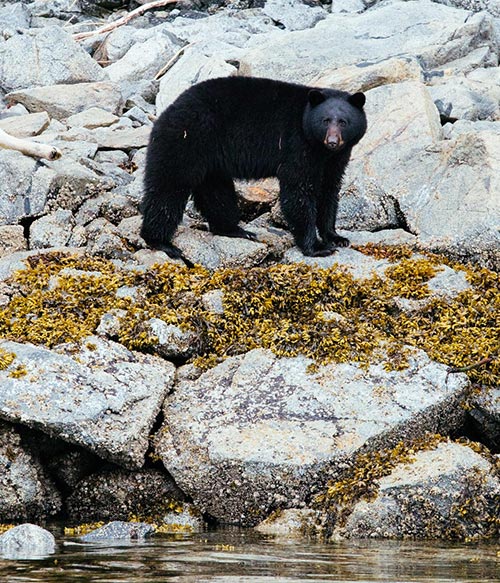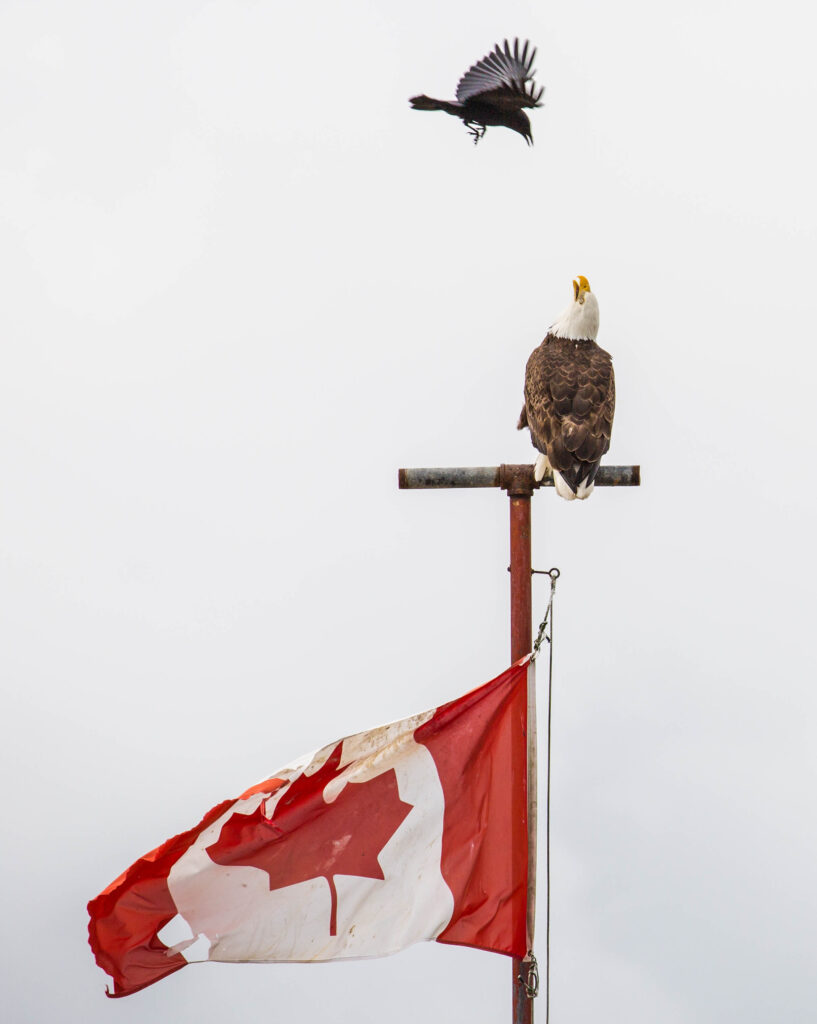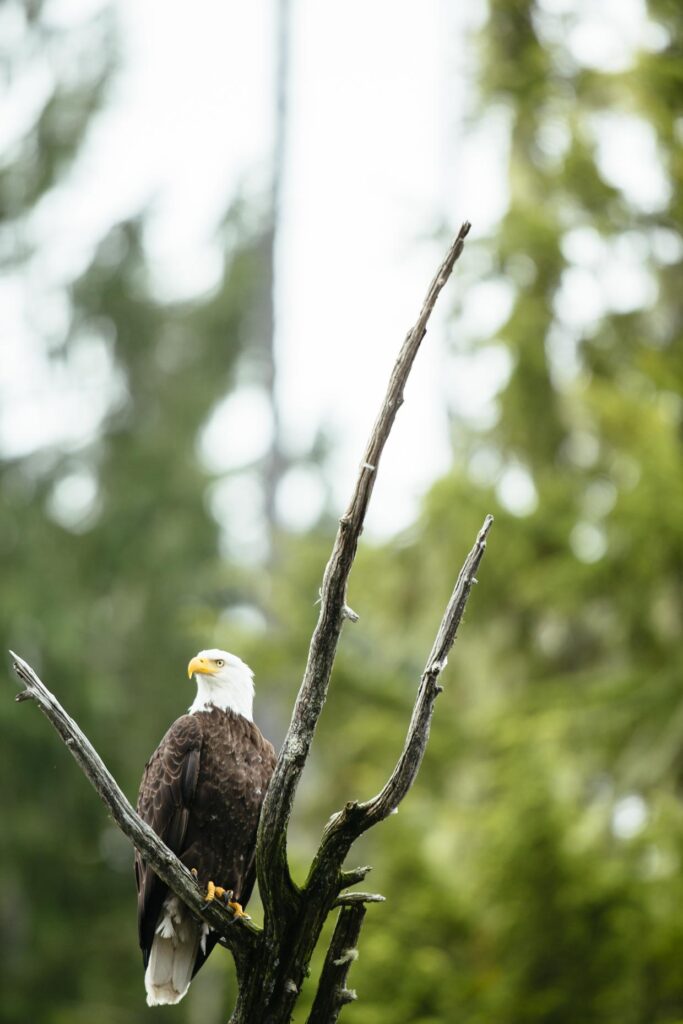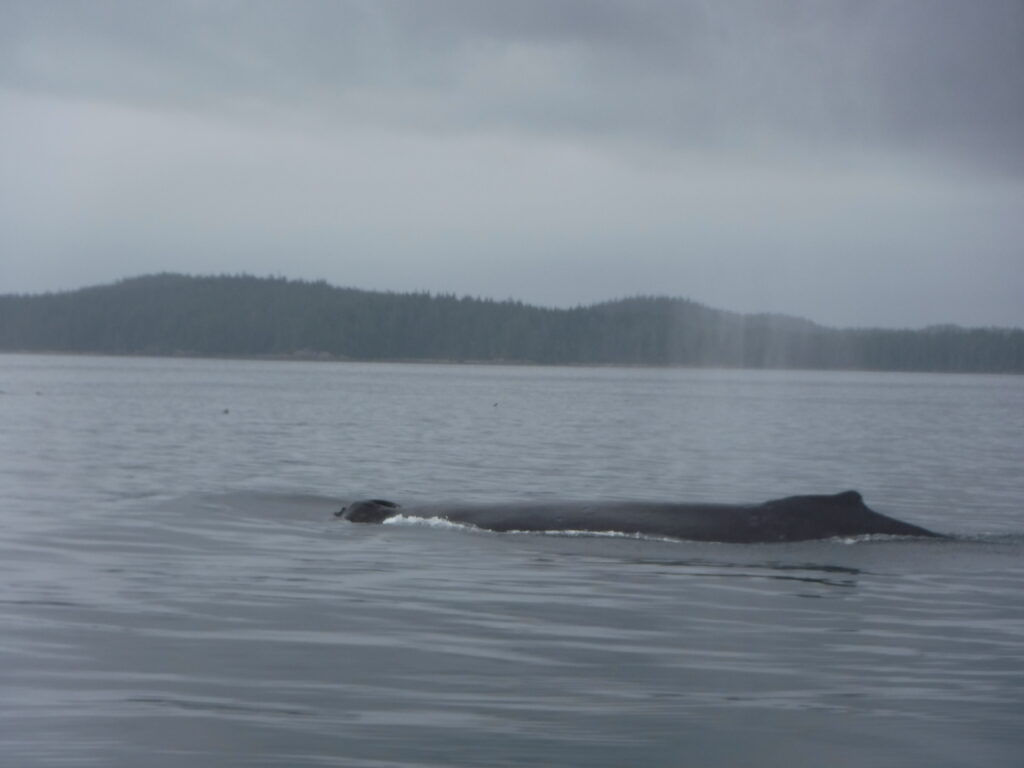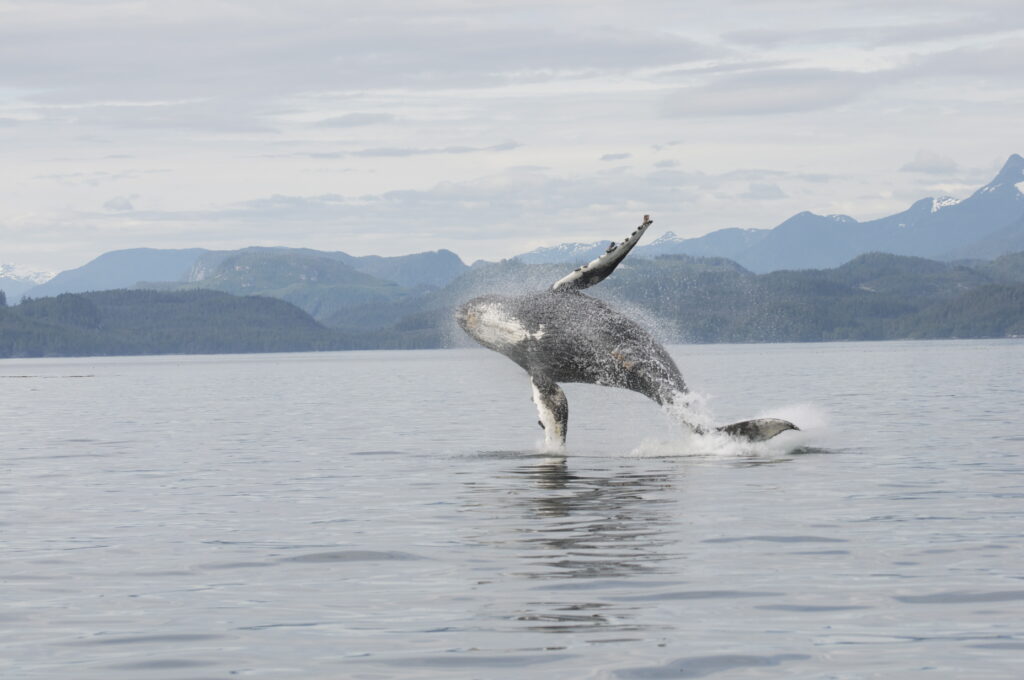Reconnect with Nature in a diverse wilderness
Nimmo Bay sits among the heart of the Great Bear Rainforest and a unique archipelago on the Pacific coast, which abound with fascinating flora and fauna. From the forest to the ocean, the diverse wilderness in our unique region draws guests to reconnect with nature. Come revive an appreciation for the phenomenal natural world.
Let’s meet some of our natural neighbours that you may encounter on your luxury adventures around Nimmo Bay.
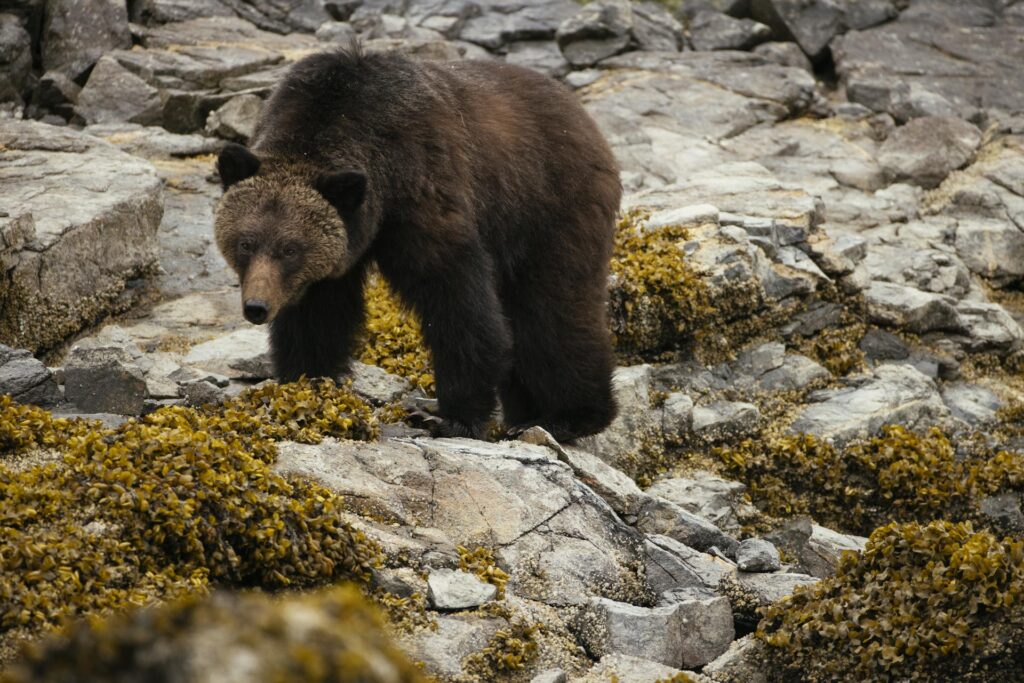
When you arrive at Nimmo Bay and explore the surrounding area, wildlife sightings always enhance the experience. On the ground, immersed in water, or flying high, a diverse population of animals call this area home.
Orcas
These majestic water-faring friends swim the Pacific Ocean not far from Nimmo Bay. Orcas have roamed the oceans for about 6 million years, each with a lifespan of 40–80 years. They have the second-largest brain of any animal globally and have a rich culture replete with languages, emotions, and familial behaviours.
Orcas, despite their “killer whale” nickname given to them for their predatory nature, are not actually whales—they belong to the dolphin family. They navigate the waters in pods, so keep your eyes peeled for several orca fins popping out of the ocean!
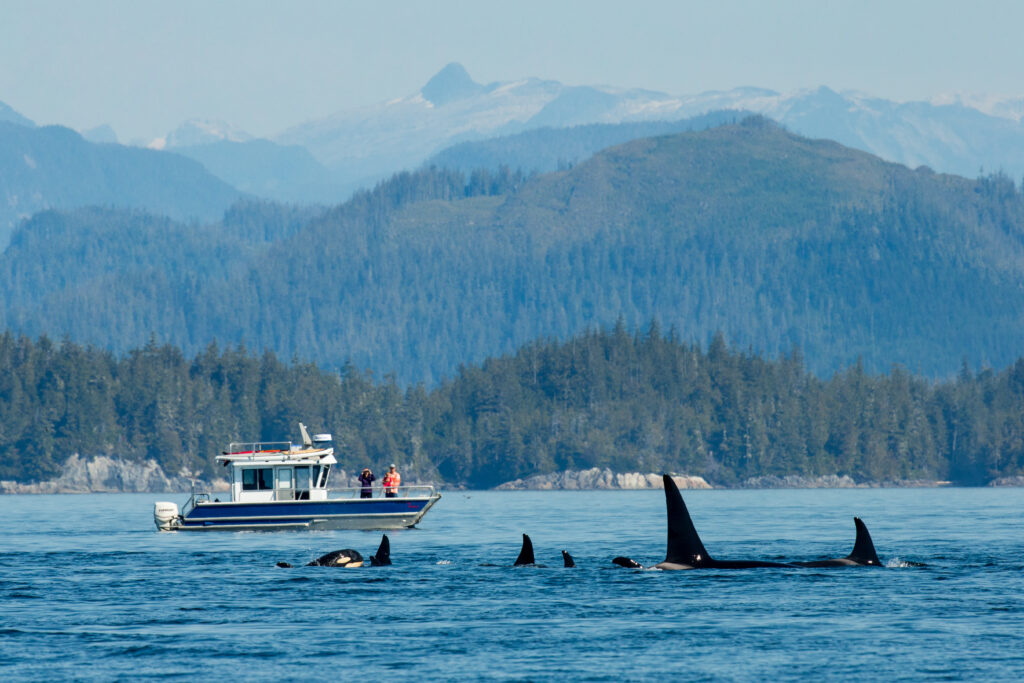
Bears
Big ol’ bears! These large carnivores can frighten many people before they visit us in the wilderness and learn more about our fuzzy neighbours. When bears are unprovoked, they are gentle giants who just want to find their next patch of berries, salmon bearing stream or dig up some roots. We have two kinds of bears near Nimmo Bay: grizzly bears and black bears.
Grizzly bears (also referred to as Brown bears or Kodiak bears) are the larger of the two and can be identified by the tell-tale hump between their shoulders. They have long and light claws on their front paws, which they use to dig up roots effectively. Some people believe the myth that grizzlies don’t climb trees, but they do—they just don’t do it as often as black bears.
Black bears don’t always have black fur and can appear cinnamon coloured, tan or even white in specific geographical areas due to genetics, but they are a bit smaller than grizzlies. Their claws are short, which makes climbing trees much easier. These bears have prominent ears and a snout and face that looks like a straight line from the side.
If you’re hiking near the wilderness lodge and find some bear tracks, you can distinguish which bear left them by the shape and whether or not there are claw marks. Black bears leave a curved pad with no claw marks, and grizzlies will look straighter under the toes with obvious claw marks above. And, of course, before you head out on an adventure, ensure you know your bear safety basics! All of our bear viewing guides are certified through the Commercial Bear Viewing Association of BC and they will happily go over some tips with you to keep you and the bears comfortable and safe.
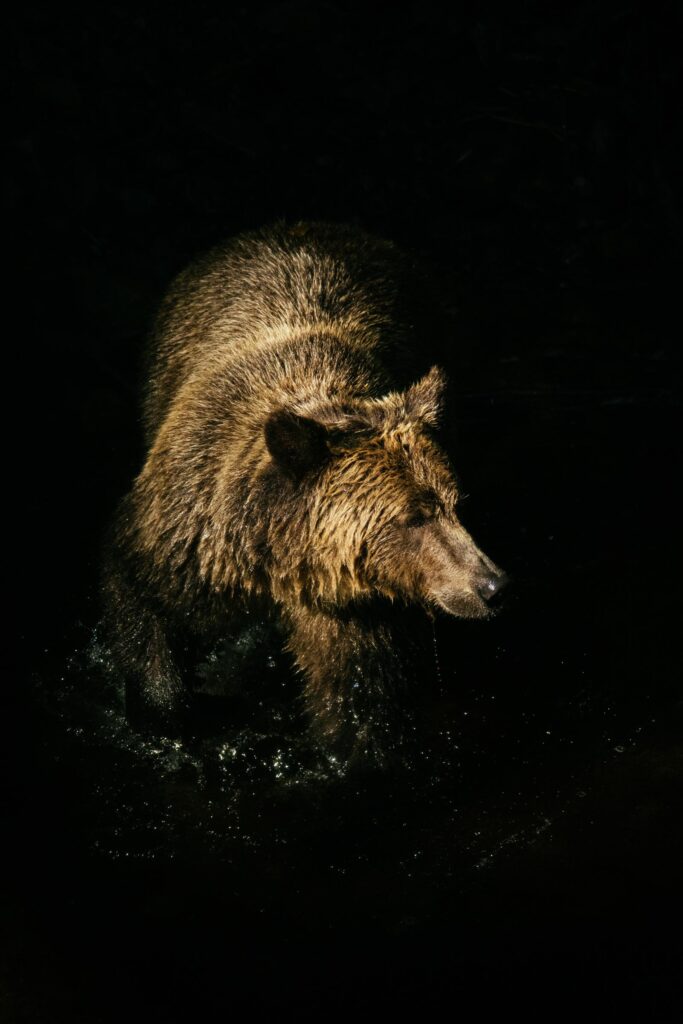
Eagles
Over 35,000 eagles call British Columbia home, and even though these birds are migratory, they can be found year-round near the coast thanks to their preferred menu item: fish. And those fish don’t stand much of a chance against these predators’ eagle eyes. They can see 4 to 7 times further than us silly humans. Now that’s something these proud birds can brag about.
Flying high at around 3,000 metres (10,000 feet) requires precise balance, and eagles have developed a cool technique to help. If an eagle loses a feather, it will pluck the same feather on the opposite side to maintain its equilibrium during flight mode.
Although you might often see them flying solo, eagles mate for life. They commit to a partner and a nest that they return to each year for breeding. Keep your camera out to capture wildlife photography of this regal bird in the wilderness close to your luxury cabin surrounded by the splendour of nature.
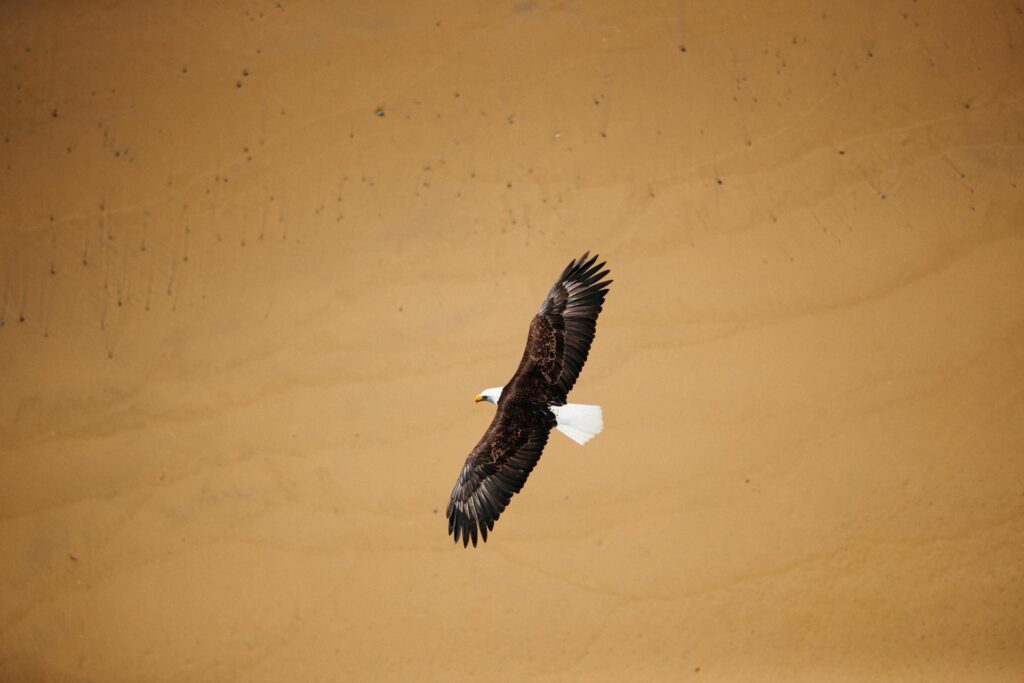
Humpback Whales
Our location on the Pacific coast is home to some enchanting sea animals, and one of the biggest we see is the humpback whale. They can grow up to 19 metres (about 60 feet) long and have a lifespan similar to humans, living up to 80–90 years. If you’re seeking to see a humpback whale, don’t expect to see a large group of them because they usually travel alone or with one or two other whales in a small pod.
For being such large animals, they only feed off small items like krill and tiny fish—but even though their preferred food is small, they eat up to 1,360 kilograms (3,000 pounds) a day. And, when they’re not looking for their next meal, humpback whales may be singing haunting songs that can be heard great distances in the ocean. We will drop a hydrophone from the boat during your Coastal Safari so that you can hear their enchanting melodies for yourself. The male humpbacks use this fascinating communication during mating season.
Individual humpback whales can be identified by their unique tail shape, long flippers and marking as well as their dorsal shape. Every individual whale that we view near Nimmo Bay has a name, number and a history that is often recorded in the Marine Education and Research Society (MERS) catalogue. Check it out if you are interested in learning more about these gentle giants of the North Pacific.
Box Crab
The box crab is truly a master of disguise. While burrowing into the muddy ocean floor, it can fold its claws in so much that it doesn’t appear to be a crab at all. Mix that ability with its heavily-calcified exterior, and it has the ultimate camouflage from its predators.
You’re not likely to stumble across box crabs while cruising the tide pools. They prefer to occupy the deeper spaces in the ocean up to 550 metres (1,795 feet).
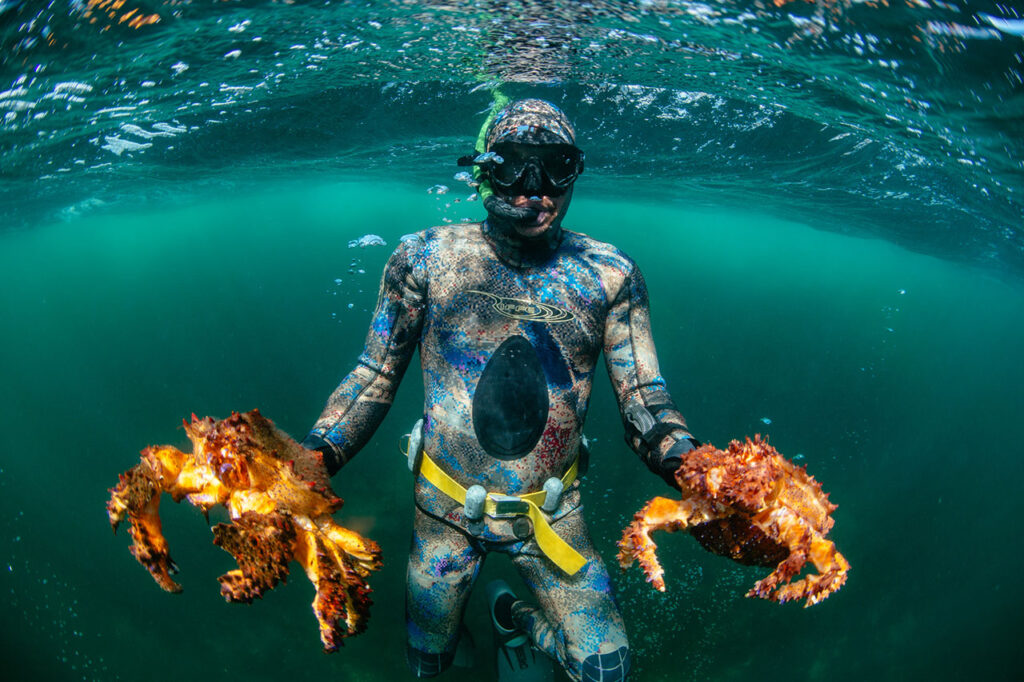
Immerse in Nature
If any of these natural wonders have piqued your interest, we encourage you to dive into a Nimmo Bay Experience in our natural paradise. Unplug from your to-do list and immerse in the heart of the Great Bear Rainforest. Wilderness awaits.
